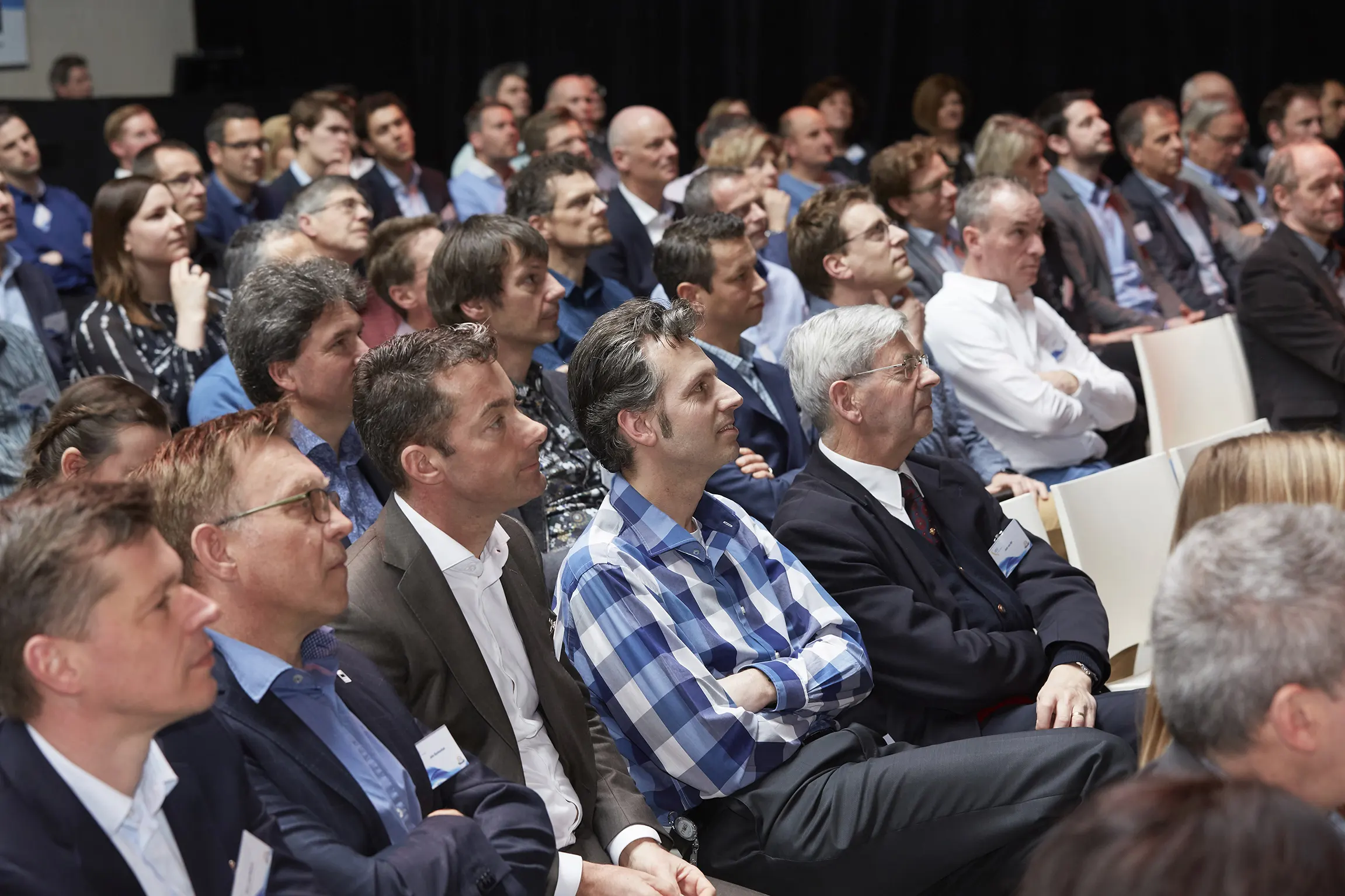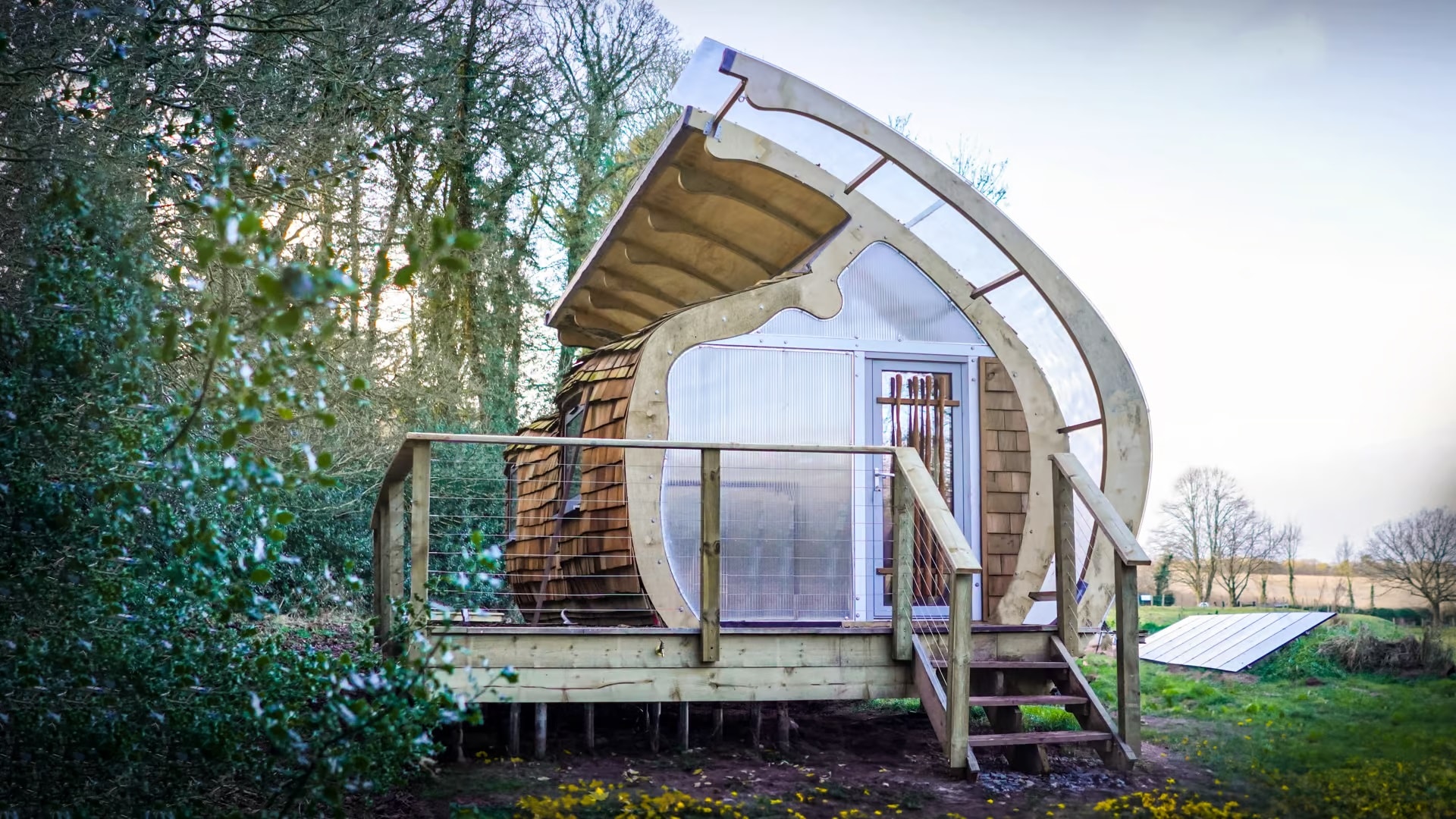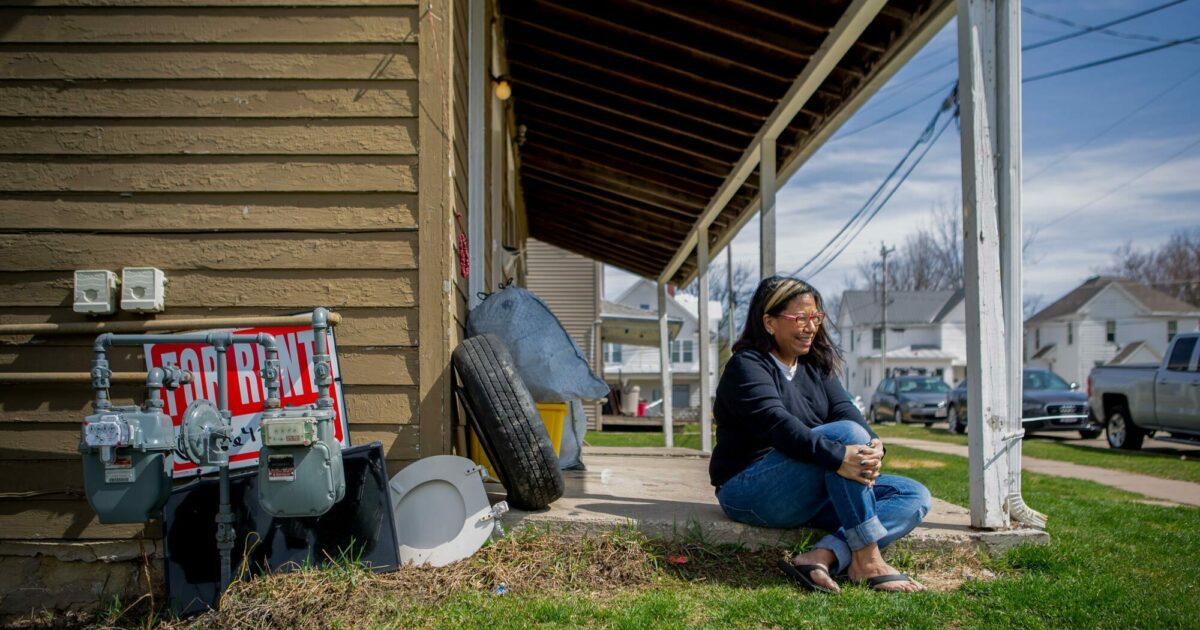In the heart of my weekly newsletter, which proudly serves a dedicated readership of over 3,000 industry experts, lies a special feature—the Reader’s Poll. Each week, I pose a singular question, inviting our industry’s professional community to share their perspectives. The engagement has been phenomenal, and I’d like to present a summary of the findings from the most engaging questions of the last three months. These responses not only provide a window into the collective mindset of our industry but also highlight the topics that resonate most with my audience.

photo – International Builders Show
The Future of Manufactured Housing: Cross Mods’ Role in Residential Integration
The question of whether Cross Modular (Cross Mods) homes could be the key to integrating manufactured housing into all residential neighborhoods has sparked considerable debate within the industry. Recent polling reveals a divided opinion on the matter: only 19% of respondents believe that Cross Mods will pave the way for manufactured homes in every residential area, while 33.3% disagree, suggesting that there may be barriers or reluctance still to overcome. Notably, the largest segment of respondents, at 47.6%, admitted to lacking sufficient information to form an opinion, indicating a significant knowledge gap.
This uncertainty underscores the need for more education and awareness about the potential of Cross Mods as a viable housing solution. With nearly half of the participants unsure, it’s clear that the industry faces a challenge in communicating the benefits and possibilities that Cross Mods offer. As manufactured housing continues to evolve, addressing these informational voids could be crucial in changing perceptions and, ultimately, in the acceptance of manufactured homes across diverse residential settings.
Has Your Business Ever Experienced a Major Burglary or Robbery?
Nearly half of the respondents revealed a concerning vulnerability in the industry: a significant 42.9% of these companies have experienced a major burglary or robbery. This statistic underscores the critical need for enhanced security measures within the sector, which has traditionally relied on remote facilities often perceived as prime targets for criminal activities. On a more positive note, the majority of businesses, amounting to 57.1%, reported that they have not faced such security breaches. While this indicates a level of safety for the majority, the substantial percentage of those affected highlights a pressing issue that requires immediate attention. Industry experts suggest that the adoption of advanced security technologies, rigorous employee training, and collaboration with local law enforcement could be key strategies in mitigating risks and protecting valuable assets. This data not only sheds light on the existing security challenges but also serves as a call to action for offsite manufacturing businesses to prioritize and enhance their security protocols.
Innovative Urban Solutions for Addressing Homelessness
Cities across the globe are grappling with the escalating issue of homelessness, prompting a search for effective and humane solutions. A recent survey sheds light on the diverse strategies that could be employed to provide shelter and aid to those in need.
The most favored approach, supported by 37% of respondents, advocates for transporting homeless individuals to large compounds situated outside city limits. This strategy suggests a relocation model aimed at decongesting urban centers while potentially providing more space for comprehensive support services.
Close behind, with 33.3% of the vote, is the idea of rehabilitating abandoned infrastructures such as warehouses, hotels, and shopping malls. This approach not only recycles unused urban spaces but also integrates the homeless population within the city, facilitating easier access to job opportunities, social services, and community support.
Building new multistory housing units within city limits garnered 22.2% support, highlighting a proactive construction approach to create dedicated and sustainable living spaces for the homeless population. Such developments could also be integrated with social programs to assist residents in transitioning to more stable living conditions.
Lastly, the concept of constructing large communities of tiny houses received 7.4% backing. Although less popular, this innovative idea focuses on creating affordable, manageable living spaces that can foster a sense of community and belonging among residents.
Each of these solutions offers a unique approach to a complex problem, reflecting the need for tailored strategies that consider local conditions, resources, and the specific needs of the homeless population. As cities continue to evolve, so too must their strategies for ensuring that all citizens have access to safe, affordable housing.
Assessing Safety Practices: A Closer Look at Factory Safety Reviews
In the realm of manufacturing, the frequency at which factories conduct employee safety reviews is a critical measure of their commitment to workplace safety. A recent inquiry into these practices has revealed a varied landscape in how different factories prioritize and implement these crucial evaluations.
According to the data, a notable 26.7% of factories undertake safety reviews every month, demonstrating a proactive approach to identifying and mitigating potential hazards. This regularity ensures that safety protocols are not only up-to-date but also ingrained in the daily operations of the factory, potentially reducing the likelihood of accidents.
A further 18.8% of factories opt for a quarterly review schedule. This less frequent approach, while still beneficial, suggests a balancing act between operational demands and safety considerations, aiming to keep safety practices relevant without constant oversight.
Surprisingly, 23.3% of factories conduct these reviews only once a year. This minimal frequency may reflect a more complacent attitude towards employee safety, relying on long-term strategies rather than continuous improvement to maintain a safe working environment.
Alarmingly, the largest proportion of respondents, at 31.3%, admitted to never conducting employee safety reviews. This significant percentage indicates a concerning gap in safety protocols, where the absence of regular reviews could lead to unrecognized hazards and a higher risk of workplace incidents.
These findings underscore the importance of regular safety reviews in fostering a safe and aware manufacturing environment. They highlight the need for all factories to adopt at least some level of systematic review to ensure the wellbeing of their employees. The data serves as a call to action for those in the manufacturing sector to reevaluate their safety practices and strive for a culture that places employee safety at the forefront of their operations.

Forecasting 2024: The Year Ahead for Offsite Construction
As the new year approaches, industry stakeholders have been weighing in on their expectations for offsite construction in 2024. The consensus points towards a year of mixed fortunes for this burgeoning sector, with predictions ranging from optimistic to cautious and even pessimistic outlooks.
A modest 18.9% of respondents are bullish about the year ahead, predicting that 2024 will be a great year for offsite construction. This optimism is likely fueled by the growing recognition of offsite construction’s benefits, including reduced construction times, lower costs, and minimized environmental impact. Proponents believe that these advantages, coupled with increasing demand for sustainable and efficient building practices, will drive significant growth in the sector.
The majority of industry insiders, however, hold a more tempered view, with 54.1% expecting an average year for offsite construction. This perspective suggests a steady, if unspectacular, growth trajectory influenced by ongoing challenges such as supply chain disruptions, skilled labor shortages, and fluctuating material costs. While acknowledging the sector’s potential, these respondents seem to anticipate a year of consolidation rather than breakout success.
Conversely, a notable 27% of those surveyed anticipate a challenging year, predicting a disaster for offsite construction in 2024. This pessimistic outlook might stem from concerns over economic uncertainties, regulatory hurdles, and resistance to change within the broader construction industry. Such challenges could potentially hinder the adoption and expansion of offsite construction methods.
The diverse range of expectations for 2024 highlights the dynamic nature of the offsite construction sector and underscores the influence of external factors on its development. As the year unfolds, it will be intriguing to see which of these predictions aligns closest with the reality of offsite construction’s progress. Regardless of the outcome, it’s clear that 2024 will be a pivotal year for the industry, offering both opportunities and challenges that will shape its future.
Debunking Myths: The Perception of Modular Construction Versus Onsite Construction
The realm of modular construction, despite its growing popularity and proven benefits, still faces skepticism and misconceptions from a segment of the population. A recent survey sheds light on the reasons behind this perception, revealing a mix of concerns and misunderstandings that color public opinion on the matter.
A notable 20.4% of respondents believe that modular construction relies on cheap materials, suggesting a view that these buildings are of lower quality compared to their onsite-constructed counterparts. This misconception overlooks the stringent manufacturing standards and quality control processes in place within the modular construction industry, which often match or exceed those of traditional construction methods.
The cost of building modularly is another area of contention, with 14.8% considering it too costly. This perception may stem from initial investment figures, without taking into account the long-term savings modular construction can offer through reduced labor costs, shorter construction timelines, and minimized waste.
A smaller percentage of the surveyed population points to concerns over the build quality (3.7%) and adherence to building codes (5.6%). These figures suggest a lack of awareness about the rigorous inspections modular constructions undergo at both the factory and the installation site, ensuring they meet or surpass local building codes and standards.
However, the most significant factor influencing perceptions is the confusion between “modular” construction and “mobile homes,” cited by 55.6% of respondents. This confusion is perhaps the most glaring misconception, as it conflates two distinct types of structures. Modular homes are permanent structures built to the same codes as onsite-built homes, while mobile homes, now more commonly referred to as manufactured homes, are built to different standards and designed to be movable.
This survey highlights the need for greater education and awareness about modular construction. Clearing up these misconceptions and providing accurate information about the materials, costs, construction quality, and codes pertaining to modular homes could help shift perceptions and recognize modular construction for its efficiency, sustainability, and quality.
Exploring the Acceptance of Compact Living Among First-Time Homebuyers
The trend towards smaller, more efficient living spaces has prompted a crucial question within the real estate market: Are first-time homebuyers ready to embrace new homes that are under 600 square feet? A recent survey aimed to gauge the sentiment around this shift towards compact living and the results reveal a divided perspective.
According to the findings, a notable 35.7% of respondents are open to the idea of purchasing homes that offer less than 600 square feet of living space. This group represents a significant portion of the market that values the benefits associated with smaller homes, such as reduced environmental impact, lower maintenance costs, and the potential for a simpler, minimalist lifestyle. Their acceptance indicates a growing recognition of the practical and ecological advantages that come with downsizing one’s living space.
However, the majority of first-time homebuyers, at 64.3%, expressed reservations about committing to such compact homes. This reluctance may stem from various concerns, including the perceived lack of space for daily activities, entertaining, and future family growth, as well as potential challenges with storage and personal comfort. The findings suggest that despite the appeal of affordability and sustainability, the idea of living in smaller spaces still faces considerable resistance among a significant portion of potential homebuyers.
This survey highlights the ongoing debate about the future of residential living and the readiness of the market to accept smaller, more sustainable housing options. While a shift in perception is evident among a portion of first-time buyers, the real estate industry may need to further educate and innovate to fully embrace the potential of compact living spaces. As societal values continue to evolve towards sustainability and minimalism, the acceptance of smaller homes may grow, reflecting a broader change in what it means to create a home in the modern world.
Do you have a question for the offsite industry? Let me know in the comments.
Gary Fleisher is a renowned blogger and commentator on construction and housing trends, known for his insightful analysis of the industry.



